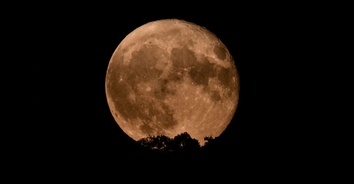Calling all astronomy fans: this Sunday evening (October 13th), you will be treated to the sight of a full orange moon in the night sky, Newsweek reports.
The Hunter's Moon will appear when the sun goes down on October 13, 2019, and will set the sky ablaze with the most gorgeous orange spectacle. According to Country Living, the precise time of the full moon is 22:07 pm GMT.
Check out this incredible footage of a Hunter's Moon, and learn more about this incredible phenomenon:"The October full moon will happen on the 13th and is known as the Hunter's Moon. The Moon will rise just after sunset, at 18:35 and will be highest in the sky around midnight, so if you go for a walk after dinner and the skies are clear, face south and you should be able to spot a beautiful full moon," Tania de Sales Marques, astronomer at the Royal Observatory Greenwich told Country Living.

Also known by its other names, the Travel Moon and the Dying Moon, the term ''Hunter's Moon'' refers to the fact that this time of year - when sunset and moonrise are closest together - was historically the best time to hunt.
According to de Sales Marques from the Royal Observatory Greenwich, "this name is thought to date back to early European and Native American tribes who would associate October's full moon with the season for hunting game and preparing for the winter months."
"It’s the location of the moon near the horizon that causes the Hunter’s Moon – or any full moon – to look big and orange in colour," science journalist, Deborah Byrd, explains.
In any case, you don't have to worry too much if you miss the Full Hunter's Moon as the Frost Moon and Cold Moon can be spotted in November and December.
Also, stargazers can still catch sight of the Draconid and Southern Taurid meteor showers which will be setting the night sky alight with stunning shooting stars today and tomorrow, across the United States.


